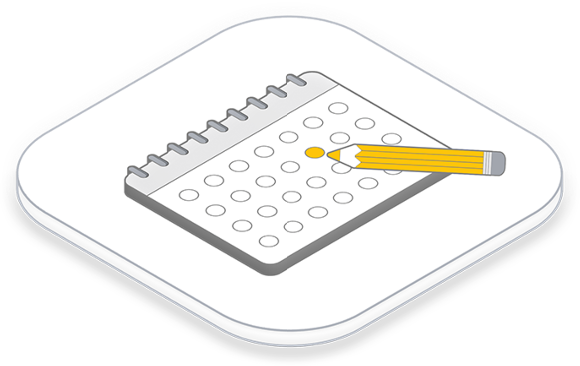Successful interaction with ChatGPT requires that effective prompts are formulated. Failure to do so can lead to misunderstandings or even misleading responses from the bot. Therefore, in this blog article, we will take a closer look at how to write high-quality prompts to maximize the potential of ChatGPT.
Interacting with ChatGPT is comparable to an interview. You should clearly know what the goal of a question is, as this will influence the way you ask your question. By specifically adapting the question structure, tone and depth of information, the response quality of ChatGPT can be significantly influenced. You should therefore think about the following aspects in advance:
Objective of prompts
The intention behind a question determines how it is formulated. Depending on this intention, the AI’s response can range from a short answer to detailed explanations.
Structure and tone of voice
The structure of the question is essential for a relevant answer. While a formal tone produces factual answers, a relaxed tone tends to generate informal or creative feedback.
Level of detail
The desired depth of information within the question influences the depth of response. However, it should be noted that questions that are too specific could overwhelm the bot. It can therefore be useful to break down complex questions into several sub-questions.
Some examples
Good prompts are clear and precise, such as “Explain the basics of quantum mechanics in a simple way” or “Tell me a funny story about the fox and the rabbit”. Bad prompts, on the other hand, are too vague or overloaded, such as “Tell me all about the galaxy” or “Why is the sky blue and why do people sleep?”.
A common misconception is that more complex prompts inevitably lead to better answers. It is also wrong to assume that ChatGPT automatically recognizes tone of voice.
Three takeaways:
- Structure, tone and depth of information are critical to answer quality.
- You should know the answer objective before asking a question.
- It is advisable to break down complex questions into several, simpler prompts.
Practical tips
- Experimenting with different question formulations and depths can be helpful to understand how ChatGPT reacts.
- If the answers are unsatisfactory, the question elements should be adjusted one after the other and optimized in several attempts. Many changes at the same time distort the result.
- A clear, understandable choice of language is also preferable, while colloquial terms or cultural allusions should be avoided unless they are explicitly desired and relevant to the result.
The context also influences the result
The effectiveness of a ChatGPT prompt also depends largely on the context. This provides background information that ChatGPT needs to understand the context of the question. This involves the entire story, the details and facts that are related to the actual question. The context therefore defines the situation or scenario in which the question is asked. Without it, the solution could provide correct but possibly irrelevant answers. This is because the AI answers based on learned patterns and cannot create a real context itself. However, a common misconception is that more context always leads to better results. However, too much context can sometimes lead to superfluous details in the answer.
Practical tips:
- When creating a prompt, consider what additional contextual information is required for a relevant response.
- Practice creating prompts with different contexts to get a better understanding of ChatGPT’s response behavior.
- Think of prompt development as a process where you can make adjustments to get the best result.
The art of prompt engineering
Unconventional methods and approaches can sometimes deliver remarkable results, especially in prompt engineering. In conclusion, we will therefore explain three techniques with which you can influence the reactions and results of ChatGPT.
Priming method
The first method is the so-called “priming” in ChatGPT. In this process, specific prompts or contexts are given to influence the subsequent responses. By specifically priming ChatGPT with certain data or guidelines, you can influence the type, topic or style of the response. ChatGPT responds based on its training data, which contains a variety of contexts and styles.
For example, if a user wants to learn about environmentally conscious living, it is less useful to formulate a question like: “Tell me about environmental protection.” A more targeted question would be: “I am trying to reduce my ecological footprint. What are your thoughts on this?
Self-experiment
Why don’t you enter “I am trying to reduce my ecological footprint. What are your thoughts on this?” in the ChatGPT input mask.
Compare the result with “Tell me something about environmental protection.”
In the example with priming, the user provides the context through their specific query and thus prepares the AI to provide information and tips on an environmentally conscious lifestyle. The answers are very likely to be more relevant and targeted than without the specific priming.
Persona method
Another method is to assign a specific role or personality to ChatGPT. While ChatGPT doesn’t usually have its own personality or history, you can give the bot a role for a specific request. An example of this would be a library wanting to help its users discover new books based on their interests. ChatGPT should take on the role of an enthusiastic literary connoisseur and librarian who has in-depth knowledge of books and authors and is happy to make reading recommendations. The AI can be configured using the persona method so that it gives specific, contextual answers that correspond to the character of a librarian. The AI then not only offers suitable book recommendations, but also asks follow-up questions to tailor the suggestions even better to the user’s preferences.
Self-experiment
Try this prompt: “Write a sonnet about sunflowers as William Shakespeare”.
By assigning the role – in this case William Shakespeare – the form of the answer is largely determined by the persona. However, it is important to note that ChatGPT does not actually assume a persona, but merely imitates it based on its processed training data.
Collaborator method
A third method sees ChatGPT more as a collaborative partner than a simple tool. For example, ChatGPT can be asked for suggestions for a project. Such an approach can be particularly helpful for creative writing or brainstorming. For example, if an author wants to develop new ideas for a novel, ChatGPT can act as a brainstorming partner to develop characters, plot twists and world building, draft dialog or even write entire sections of the book for the author to revise. Another area of application is in consulting. For example, if a management consultant needs fresh approaches for a marketing strategy, ChatGPT can serve as a source of ideas for marketing measures, help with the formulation of USPs (Unique Selling Propositions) and develop a possible customer approach strategy together with the consultant.
Self-experiment
For example, try: “Name 10 relevant aspects of a loyalty program for customers of a lifestyle fashion brand”.
In conclusion, the creative design of prompts alone is not enough. They should be clear and precise. It is always important to remember that ChatGPT has no real intuition or awareness, but only ever responds based on its training data.
One last tip
ChatGPT currently processes English prompts even better than for example German prompts, as significantly more training data is available in English. The results will therefore be slightly better in English. If you are not very comfortable with English, simply write your prompts in other language first and then send them through the DeepL AI translator before copying the result into ChatGPT.
-> https://www.deepl.com/translator
If you are thinking about using generative AI in your company to work more efficiently and achieve better results, please contact our AI experts. We will create with you a customized solution!
About the author



Comments